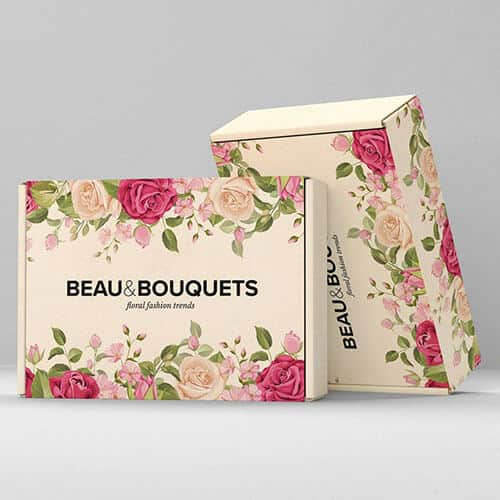It’s easy to overlook the value of a well-designed business card. But when done right, a business card can still be one of the most powerful tools in your professional toolkit. Whether networking at an event, meeting a potential client, or simply introducing yourself, your card speaks volumes about your brand.
Yet, many people fall into the trap of poor design decisions. These common business card design mistakes can make your card look amateurish, confusing, or forgettable. If you’re serious about your brand image, it’s time to take a closer look at your design choices.
At Printingprogress Ltd, we craft business cards to make lasting impressions. With creative flair, expert guidance, and a fast turnaround, we turn your ideas into professional, standout cards that reflect your brand perfectly.
Call us on 0800 999 1094 or drop us an email at info@printingprogress.co.uk for details.
At Printingprogress Ltd, we design and print business cards that speak volumes. From sleek finishes to innovative materials, our cards are crafted to impress, connect, and leave a lasting mark wherever you go.
Why Business Card Design Still Matters
A business card isn’t just a contact card; it’s a first impression. It represents your professionalism, style, and attention to detail. Knowing how to design a professional business card means understanding the small things that leave a significant impact.
The goal? Make it easy for people to remember you—and to get in touch.
Common Business Card Errors To Avoid
Let’s start with the most common business card errors that trip people up:
1. Overcrowding Information
Trying to cram too much into your card can complicate reading. Instead, aim for balance. Clever white space usage makes your card look cleaner and helps guide the reader’s attention to key information.
2. Using Poor Quality Images
A fuzzy logo or low-res graphic can ruin an otherwise good design. Always use high-pixel resolution images and ensure your files meet the required print resolution for the printer—usually 300 dpi. Failing to do this is one of the most frequent mistakes in business card printing.
3. Misaligned Elements
Alignment issues are subtle but make a big difference. If your text or logo looks slightly off, it gives the impression of carelessness. Consistent spacing and alignment create visual harmony and show professionalism.
4. Ignoring The Brand Identity
Your business card should feel like an extension of your brand. That means maintaining design consistency with your logo, website, and other marketing materials. Mismatched colours or fonts can confuse people about who you are.
5. Export Your File In CMYK, Not RGB
Printers use CMYK (cyan, magenta, yellow, black) for colour. Designing in RGB (used for screens) can produce colours that look entirely different when printed.
6. Set The Document To Correct Print Resolution
A resolution of 300 dpi (dots per inch) is standard for high-quality prints. Anything lower can lead to blurry or pixelated results.
Business Card Layout Issues You Should Watch Out For
One of the most common business card layout issues is ignoring visual hierarchy. Your name, job title, and contact information should be the easiest to find. This can be achieved by playing with font sizes, boldness, and placement.
Other layout-related mistakes include:
- Placing elements too close to the edges (remember to use bleed margins)
- Overcomplicating the layout with too many sections or columns
- Forgetting about symmetry and balance
Use graphic design tips like the rule of thirds or grid-based layouts to keep things structured and neat.
The Power Of Colour In Business Cards
Colour is more than just a design choice—it communicates emotion and tone. When you understand colour psychology, you can use it to reinforce your brand. For instance:
- Blue conveys trust and reliability
- Black adds sophistication
- Yellow gives a sense of energy and optimism
But beware: poor colour contrast can affect readability. Always ensure there’s enough contrast between your text and background. Light grey on white or red on black may look cool on screen but could be unreadable in print.
Tips For Designing A Business Card That Stands Out
If you’re in the process of designing a business card, here are some practical business card tips that will make yours more effective:
1. Embrace Minimalist Design
Simplicity often wins. A minimalist design helps the recipient focus on the essentials—your name, what you do, and how to reach you. Less clutter also creates a more elegant, modern look.
2. Think About Texture and Finish
While not part of the visual design, the texture of your card plays a role in perception. Matte finishes feel smooth and sleek; gloss can highlight colours. Embossed or spot UV finishes can add a tactile and visual punch.
3. Use A Clear Visual Hierarchy
Structure your content so the eye naturally flows from one element to another. This is where understanding visual hierarchy makes a difference. Your name should stand out, followed by your job title and contact details.
4. Stick With Standard Sizes
While unusual sizes or shapes can catch attention, they can also be impractical. Make sure any unique designs still fit in a standard wallet or cardholder, or they risk being tossed out.
CONTACT PRINTINGPROGRESS
Printingprogress Ltd: Get Your Bespoke Business Cards Designed From Us!
Designing a business card might seem like a small task, but small mistakes can have a significant impact. At Printingprogress Ltd, we’re here to make your business cards unforgettable—for all the right reasons. Whether you’re after something sleek and simple or bold and unique, we use our expertise to design with your business at heart and with your input every step of the way.
From concept to completion, we work fast—so fast, we’ll have your new cards designed and printed before you can say, ‘I forgot to order new business cards’!
We offer many distinctive styles to suit your brand, from standard matt laminate to letterpress, spot UV, and 3D gold and silver foil. Looking for something more eye-catching? Choose from plastic, metal, or even wooden cards, each crafted with quality and precision. All our papers are Forest Stewardship Council-approved because we believe in doing our part for the planet.
Contact us today, and let us help you stand out.


 Eco friendly, sustainably sourced recycled FCS certified print
Eco friendly, sustainably sourced recycled FCS certified print Takeaway Screens
Takeaway Screens Postal Boxes
Postal Boxes